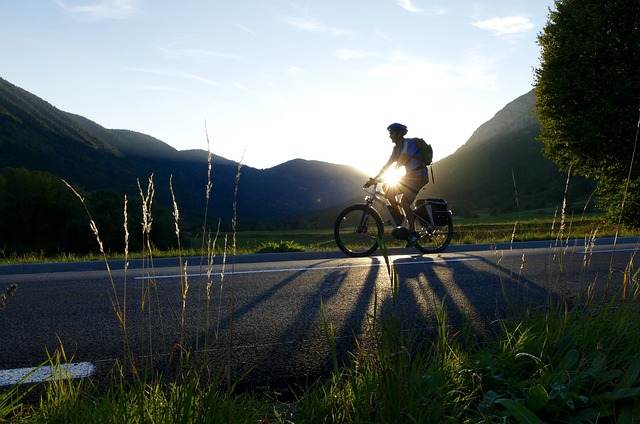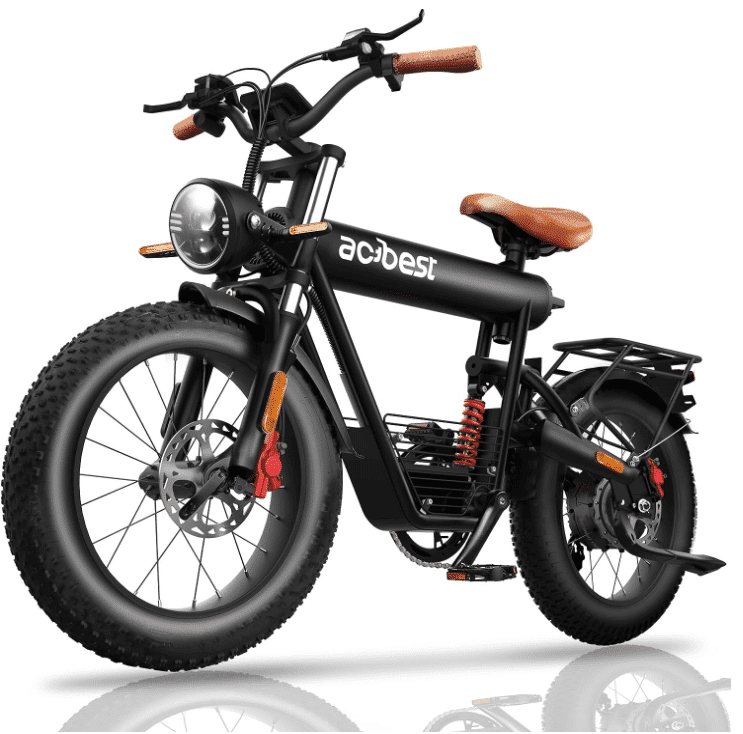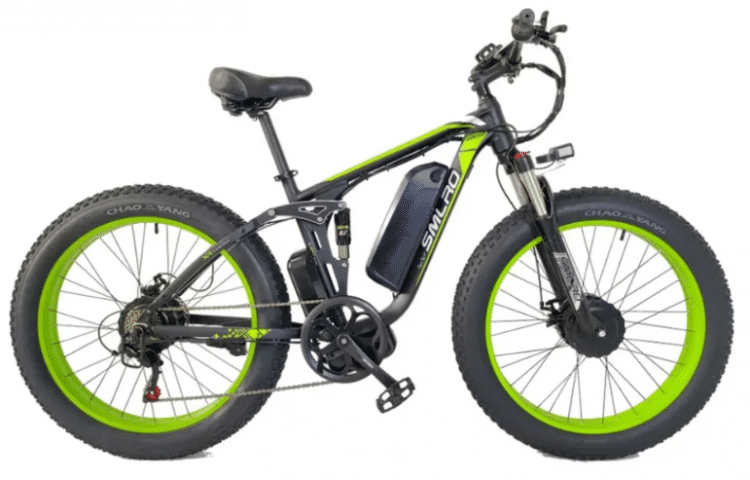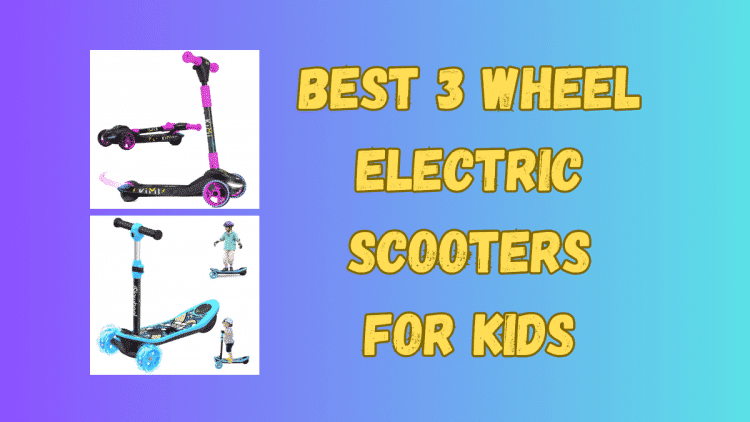Class 3 eBike (Electric Bike Go-2-Guide)
In the rapidly growing e-bike universe, Class 3 ebikes, often known as “speed pedelecs”, have carved a niche for those seeking both speed and sustainability. Marrying the eco-friendly ethos of electric bikes with an increased speed cap, they cater to the need for faster commuting without sacrificing the environment. Let’s unravel the distinct features and allure of these e-bikes.
Links to each Class of eBikes: CLASS 1 – CLASS 2 – CLASS 3 – CLASS 4
Class 3 eBike
1. Distinguishing Features of Class 3 eBikes
- Pedal-Power with a Boost: Class 3 eBikes offer pedal-assist but ramp up the maximum assisted speed to 28 mph (45 km/h).
- No Throttle: Unlike Class 2 eBikes, these bikes solely rely on pedal-assist without any throttle mechanism.
- Battery Brilliance: Their battery configurations are often designed to handle extended high-speed journeys.
2. Technical Innovations in Class 3 eBikes
- Enhanced Motor Capabilities: Motors in these eBikes are tailored for sustained high-speed pedal assistance.
- Advanced Digital Displays: Apart from essential stats, many models offer advanced diagnostics, journey analytics, and even integrated GPS.
- Optimized Gear Systems: To cater to higher speeds, many Class 3 eBikes come with sophisticated gear systems for smooth transitions.
3. Advantages and Allure of Class 3 eBikes
- Time-Saving Commutes: Their increased speed makes longer commutes shorter and urban navigation more efficient.
- Fitness Flexibility: Riders can choose the intensity of their workouts, adjusting the pedal-assist level as desired.
- Eco-Conscious Speed: Offering the thrill of speed while remaining eco-friendly presents the best of both worlds.
4. Journeying Far and Wide with Class 3 eBikes
- Urban Expeditions: Zoom through cityscapes, ensuring quicker rides even during peak traffic.
- Inter-city Travels: Suitable for bridging adjacent cities or towns, making the commute between them a breeze.
- Adventurous Outings: Their capacity to maintain higher speeds makes them ideal for longer day trips.
Class 3 eBike FAQ:
People also ask:
Q: What are Class 3 eBikes?
A: Class 3 e-bikes, known as “speed pedelecs,” offer pedal assistance up to 28 miles per hour (45 km/h). They rely solely on pedal-assist and do not have a throttle.
Q: Is a Class 3 eBike worth it?
A: It depends on individual needs. If you seek faster speeds for long commutes or want a bike that bridges the gap between conventional bikes and mopeds, a Class 3 can be an excellent choice.
Q: What is Class 4 eBike?
A: As of my last update in September 2021, there isn’t an officially recognized Class 4 e-bike category in the U.S. Standards may vary internationally or could change in the future.
Q: Can a Class 3 e-bike have a throttle?
A: No, Class 3 e-bikes are pedal-assist only and do not come with a throttle.
Q: Should I buy a Class 1 or Class 3 ebike?
A: Class 1 e-bikes offer pedal-assist up to 20 mph and are generally allowed on more paths. Class 3 e-bikes are faster but may have more restrictions. Choose based on your speed needs and local regulations.
Q: How fast can a Class 3 e-bike go?
A: Class 3 e-bikes offer pedal assistance up to 28 mph (45 km/h).
Q: How fast can a Class 4 e-bike go?
A: As of 2021, there isn’t an official Class 4 category, so there’s no standardized speed limit for such a classification.
Q: What are Class 1 e-bikes?
A: Class 1 e-bikes provide pedal assistance up to 20 mph (32 km/h) without a throttle feature.
Q: What is the fastest class of ebike?
A: Class 3 e-bikes, or “speed pedelecs,” are the fastest recognized category, offering speeds up to 28 mph (45 km/h) with pedal assistance.
Q: Can I ride a Class 3 ebike in Florida?
A: Laws can change, but as of 2021, Florida allows Class 3 e-bikes on roads and streets where bicycles are permitted. Always check current local regulations.
Q: Can I ride a Class 3 ebike in California?
A: Yes, as of 2021, Class 3 e-bikes are permitted on California roads. However, they might be restricted from certain bike paths unless explicitly allowed by local ordinances.
Q: Can you ride a Class 3 ebike in Texas?
A: As of 2021, Texas allows Class 3 e-bikes on roads where bicycles are permitted. Always verify with current state and local laws.
Q: How many watts is a Class 3 ebike?
A: Typically, Class 3 e-bikes have motors up to 750 watts, but this can vary by manufacturer and jurisdiction.
Q: What class is a 750 watt ebike?
A: A 750-watt e-bike can fall into Class 2 or Class 3, depending on whether it has a throttle and its top assisted speed.
Q: Do you need a license for a Class 3 ebike in California?
A: No, you do not need a license to ride a Class 3 e-bike in California, but riders must be at least 16 years old and wear a helmet.
Q: Which ebikes are class 2?
A: Class 2 e-bikes have a throttle that can propel the bike without pedaling and typically offer assistance up to 20 mph.
Q: Does rad make a Class 3 ebike?
A: As of 2021, Rad Power Bikes does offer models that fit the Class 3 definition in some jurisdictions. It’s best to check their current lineup or consult with the company directly.
Q: How fast can a 500 watt motor go?
A: The speed of a 500-watt motor varies based on bike design and weight, but generally, such motors can propel an e-bike to speeds between 20-28 mph (32-45 km/h).
Q: Does a Class 2 ebike need pedals?
A: Yes, Class 2 e-bikes come with pedals, allowing for traditional cycling in addition to using the throttle.
Q: Can a Class 2 ebike be changed to Class 1?
A: Potentially, by disabling or removing the throttle and ensuring the motor assistance doesn’t exceed 20 mph, a Class

5. Things to Consider When Buying a Class 3 eBike
- Safety First: Given their speed, consider models with enhanced braking systems and reflective elements.
- Battery Longevity: For longer commutes, invest in models with extended battery life and quick charging capabilities.
- Stability and Comfort: A stable frame and comfortable seating become crucial at higher speeds.
6. Legalities Surrounding Class 3 eBikes
- Path Restrictions: Their speed often limits them from certain paths and trails meant for slower traffic.
- Licensing and Helmet Laws: Many jurisdictions require special licensing or mandatory helmet use for Class 3 eBike riders.
8. Round-Up of Class 3 eBikes!
- Higher Speeds: Class 3 e-bikes are designed for faster commuting with pedal-assist speeds that can reach up to 28 miles per hour (45 km/h).
- No Throttle: Unlike Class 2 e-bikes, Class 3 bikes rely solely on pedal-assist without a throttle mechanism.
- Eco-friendly: Like all e-bikes, Class 3 versions are eco-friendly, producing zero emissions, making them a sustainable transport option.
- Extended Range: Due to their advanced battery and motor systems, some Class 3 e-bikes can offer extended ranges, suitable for longer commutes.
- Safety Features: Many Class 3 e-bikes come equipped with integrated lights, reflective materials, and even bells, considering they’re designed for faster speeds on roads.
- Regulations: Due to their higher speeds, Class 3 e-bikes might face stricter regulations in certain areas and may not be allowed on some bike paths where slower e-bikes are permitted.
- Ideal for Longer Commutes: For those looking to replace a car commute or cover longer distances, Class 3 e-bikes offer a speedy and efficient alternative.
- Growing Popularity: As urban areas become denser and traffic congestion increases, the demand for faster e-bike alternatives like Class 3 models is on the rise.
- Battery Technology: Many Class 3 e-bikes utilize state-of-the-art battery technology, ensuring faster charging times and longer battery lifespans.
- Health and Fitness: Riding a Class 3 e-bike can offer substantial cardiovascular benefits, especially since higher speeds require more effort, even with assistance.
Class 3 e-bikes strike a balance between speed, sustainability, and fitness, providing an appealing option for those looking for a quicker and greener mode of transportation.
Conclusion: Embracing a Future Shaped by Class 3 eBikes
In the evolving landscape of urban commuting, Class 3 eBikes stand as a testament to the harmony of technology and sustainability. They showcase how innovation doesn’t have to be at odds with environmental concerns, but rather, can complement it to create solutions that benefit both individuals and our planet.
The allure of Class 3 eBikes extends beyond their impressive speed capabilities. They embody a broader movement towards eco-conscious urban mobility, answering the pressing call for greener modes of transport. As cities become more congested, and the concerns over carbon footprints escalate, Class 3 eBikes offer a fresh breath of air — figuratively and literally.
Furthermore, the societal impact of these eBikes shouldn’t be understated. By creating efficient and eco-friendly transport solutions, they contribute to healthier urban environments, reducing pollutants and easing traffic congestion. The ripple effects touch everything from city planning to personal health, from reduced vehicle emissions to encouraging physical activity.
It’s essential to recognize that the rise of Class 3 eBikes isn’t just another transient trend. Instead, it is indicative of a collective acknowledgment of the need for change. They symbolize a global push towards a more sustainable future, where advanced technology serves the dual purpose of enhancing individual convenience and preserving environmental sanctity.
Lastly, Class 3 eBikes are more than just machines; they’re emblematic of a lifestyle choice. A choice that marries personal efficiency with eco-responsibility, a choice that puts the rider at the forefront of modern, sustainable living. As they seamlessly blend into the fabric of our daily routines, Class 3 eBikes beckon us towards a future where speed, sophistication, and sustainability ride side by side.
Looking for more on ebike safety? Or What’s the Right Age for an Electric Bike? We also have Electric Bike Statistics 2023.





